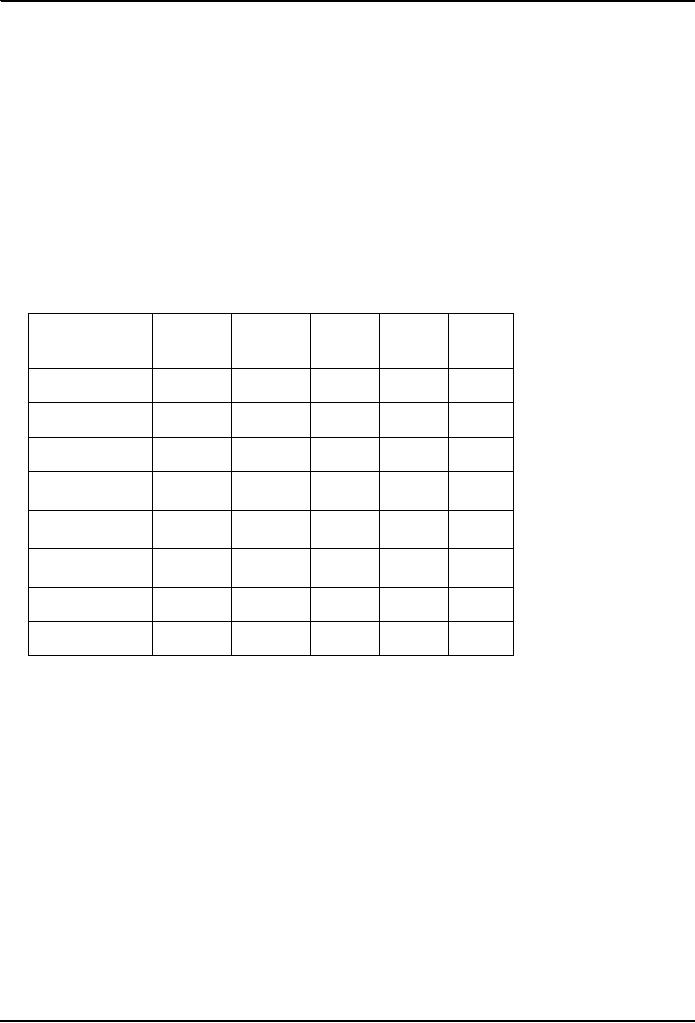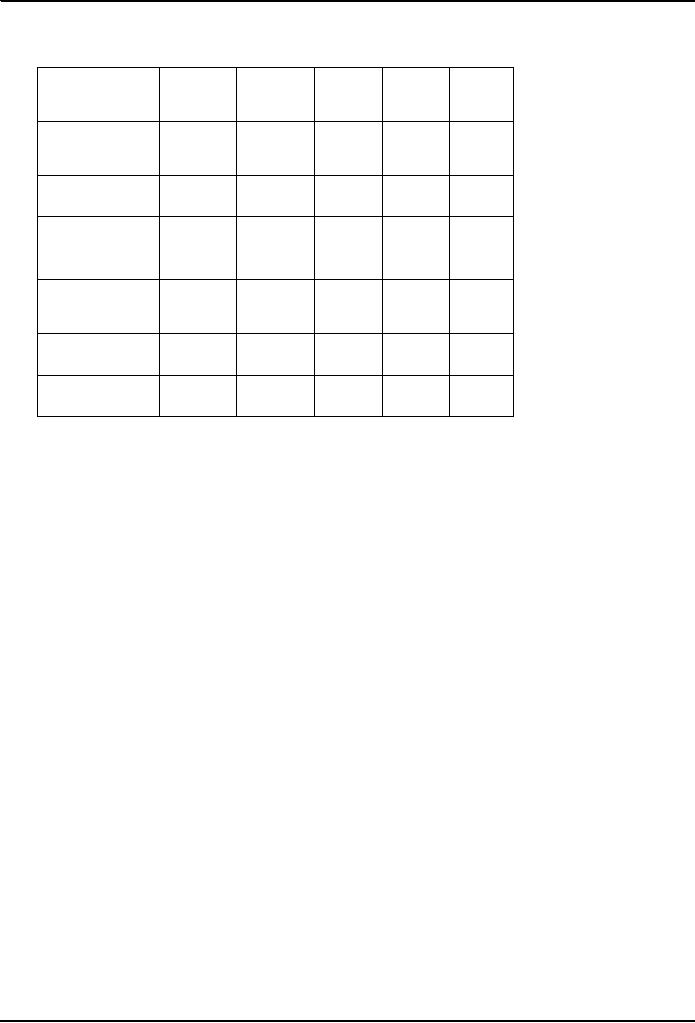 |

Conflict
Management HRM624
VU
Lesson
42
POWER
TOOLS AND MAGIC KEYS
I
Quotation
With
the world becoming a smaller
and more vulnerable place, we
have no choice to continue to
engineer
an
increasingly effective array of alternative
tools for dealing with
interpersonal conflict.
Lauri
S. Coltri
There is
one thing stronger than all
the armies in the world, and
that is an idea whose time
has come.
Victor
Hugo
"A
camel is a horse designed by a
committee" Anonymous
We
will learn in this
lecture
1. The
potential for conflict
diagnosis to improve the delivery of
legal services.
2. The
ethical and practical issues
that complicate the use of
conflict diagnosis by lawyers
and legal
assistants.
3. The
ethical obligation of lawyers to
advise their clients of ADR
options and the scope of
this
obligation.
4.
Approaches to lawyering that incorporate the
ideas advanced in this text
book, including
client-
centred
lawyering and collaborative law.
5. How
to use conflict diagnosis to develop
effective strategies and tactics
for representing
legal
disputants.
6. A
leading approach to selecting a
dispute resolution process
and provider, known as
fitting the
Forum
to the Fuss.
7. An alternative
approach to selecting a dispute
resolution process and
provider, suggested by the
principles of
conflict diagnosis.
Introduction
You
have been introduced until
now with the conflict
diagnosis, a theory based
set of skills. As a
stand
alone
technique, conflict diagnosis is a
practical method of understanding and
analyzing interpersonal
conflict,
particularly legal disputes. After
reading this course you must
have recognized that you
are now
able
to use less destructive and
useful approaches to resolving
conflicts.
Necessity of
conflict diagnosis
Conflict
diagnosis is mentally challenging and
time consuming. That is why
most lawyers would say
that
conflict
diagnosis is not necessary.
And that the efforts to develop an
understanding of underlying
interests,
sources
of conflict, personal power, and the
need to preserve relationships and trust
are in the domain of
the
client alone. However some
will say yes it is
necessary. The reason is
that the invisible veil will
always
hide
many important aspects of interpersonal
conflict from those involved
in it. Most of the time one
enters
a
conflict aware of the resource
disputes, preferences and
nuisances problems, and
perhaps the disputes
over
facts or law, but little
else. The hidden information
will be critical to assessing the hidden
conflict, the
participants'
most interests, the opportunities
presented by the other disputant's
interests. Emotional
issues
and
hidden interests may
complicate or impede resolution. Once
adversarial negotiation or litigation
starts,
it is
extremely hard to find out
about them.
Using
conflict diagnosis
The
practice of conflict diagnosis
has two major uses in
dealing with legal disputes
and transactions. It
assists
the disputant or conflict professional
in
1.
Choosing
strategies and tactics for
handling conflict and
2.
Choosing
a dispute resolution process
and provider
142

Conflict
Management HRM624
VU
Choosing
strategies and tactics for
handling conflict
In
real-world interpersonal conflict, the
practice of conflict diagnosis
can reap benefits if applied
early,
before
ADR is even a consideration. A disputant or
conflict professional who regularly
engages in conflict
diagnosis
can maximize gain for
clients, prevent conflict escalation
and dispute recurrence,
ensure optimal
resource
use, and for disputes
that involve ongoing
relationships, protect the viability of
these relationships.
Legal
professionals and other
advocates can enhance their
advocacy role by applying
conflict diagnosis as
early
as possible.
Choosing
a dispute resolution process and
provider
The
use of conflict diagnosis
for selecting ADR processes
is a field still in its
earliest infancy. This lack
of
maturity
makes conflict diagnosis very exciting to
study and practice.
Comparing
the major dispute resolution
forms
Facilitative
Nonbinding
Informal
Formal
Litigation
mediation
evaluation
&
arbitration
arbitration
evaluative
mediation
Cost
Time
Finality
Psychological
ownership
and
quality of consent
Outcome creativity
and
pareto
optimality
Conflict
containment and
escalation
Invisible-veil
thinking
Sense
of procedural justice
143

Conflict
Management HRM624
VU
Comparing
the major dispute resolution
forms
Bigoted
or
prejudiced
behaviour:
dangers
Dealing
with
disparities
in
bargaining
power
Disputant
transformation
Where it is
often
Family
Court-
Private
Private
The
found
mediation
connected
sector
civil
sector
civil
default
ADR
dispute
dispute
process
resolution
resolution
Usefulness
in
conjunction
with
other
processes
Misconduct
by
neutral
Special
qualities
Summary
We learnt the
comparative nature of different forms of
conflict resolution against
various dimensions
related
with the needs of disputants. We
also learnt about the complexity of
social and economic
environment
and also about the nature of
invisible veil.
144
Table of Contents:
- INTRODUCTION TO CONFLICT:Dispute, Legal Dispute, Call the police
- DISPUTE RESOLUTION 1:Positive affect in Negotiation, Alternative Dispute Resolution
- DISPUTE RESOLUTION II:Adjudication, Litigation, Mediation-Arbitration
- PRECONCEPTIONS ABOUT CONFLICT I:Pedagogical development, Pressures against Innovation
- PRECONCEPTIONS ABOUT CONFLICT II:Cultural beliefs about interpersonal conflict, Why strategies of change fail
- CONFLICT DIAGNOSIS:Who Needs to Know About Conflict Diagnosis?, Steps in Conflict Diagnosis
- RECURRENT THEMES IN CONFLICT DIAGNOSIS I:The Seven Steps of Social Behavior, Seven steps to diagnose conflict
- RECURRENT THEMES IN CONFLICT DIAGNOSIS II:Themes of Conflict Diagnosis
- DESCRIBING THE CONFLICT I:Description of Conflict, Identifying Interpersonal Conflict
- DESCRIBING THE CONFLICT II:Step 1 for Conflict Diagnosis, interpersonal or intrapersonal
- SOURCES AND CAUSES OF CONFLICT I:Main Sources of Conflict, Discussing major sources of conflict
- SOURCES AND CAUSES OF CONFLICT II
- INTEREST ANALYSIS I:Analyzing your interests, Analyzing the other disputant’s interests
- INTEREST ANALYSIS II:What are interests?, Tips for Interest Trees
- INTEREST ANALYSIS II:Principles and values, Basic Human Needs
- ASSESSING THE CHARACTER OF THE CONFLICT I, Premises of Deutsch’s Theory
- ASSESSING THE CHARACTER OF THE CONFLICT II:Techniques to transform competitive conflict into cooperative
- TRUST AND ITS SIGNIFICANCE I:What is Mistrust,Trust and business,Three levels of trust
- TRUST AND ITS SIGNIFICANCE II:Advantages of high trust level, Building of trust
- ASSESSING IMPEDIMENTS TO RESOLVE THE CONFLICT I:Motivation to seek vengeance, Mistrust
- ASSESSING THE IMPEDIMENTS TO RESOLVING THE CONFLICT II:Disempowered Disputant, Unpleasant Disputant
- ASSESSING THE NEGOTIATING STYLE I:Dual Concern Model, Dominating or competition style
- ASSESSING THE NEGOTIATING STYLE:Dual Concern Model, Tactics Used In Integrating
- ASSESSING POWER AMONG DISPUTANTS:Conflict and Power, Kinds of power in the Relationship Domain
- ASSESSING POWER AMONG DISPUTANTS II:Sources of Relationship Power, Context and Power
- POWER, CONFLICT, AND BATNA III:Role of Third Party in BATNA, Dealing with Power Imbalance
- STEREOTYPES, DIVERSITY, AND CONFLICT I:Stereotyping, Stereotyping in Interpersonal Conflict
- STEREOTYPES, DIVERSITY, AND CONFLICT:Categories of Diversity Issues, Seven Mental Processes to Prove Stereotypes
- STEREOTYPES, DIVERSITY AND CONFLICT III:Individual Difference and Social Category, Cultural differences in values
- MEDIATION I:When is mediation required, Processes Related to Mediation, Product of Mediation
- MEDIATION II:Important distinguishing factors, More Advantages and Disadvantages of Pure Mediation
- ADVANTAGES AND DISADVANTAGES OF MEDIATION I:Efficiency Consideration, Conflict Management and Prevention
- ADVANTAGES AND DISADVANTAGES OF MEDIATION II:Quality of Consent, Effects on the parties to mediation
- PROCESS OF MEDIATION:Stages of Mediation, Facilitative tactics in mediation
- LAW AND ETHICS OF MEDIATION I:Characteristics of mediation, Confidentiality
- LAW AND ETHICS OF MEDIATION II:Role of ethics in mediation, 8 Dimensions of Ethics in Mediation
- ARBITRATION I:Ways to Resolve Conflict, Advantages of Arbitration, Disadvantages of Arbitration
- ARBITRATION II:Varieties of Arbitration, Process of Arbitration, Contents of Arbitration Act
- NON BINDING EVALUATION:Disadvantage, Varieties of Non-binding Evaluation
- NON BINDING EVALUATION II:Varieties of Non-binding Evaluation, Advantages and disadvantages of Non-binding Evaluation
- MIXED AND MULTIMODAL DISPUTE RESOLUTION:Six System Design Principles, Extensions of Dispute Systems Design
- POWER TOOLS AND MAGIC KEYS I:Introduction, Necessity of conflict diagnosis, Using conflict diagnosis
- POWER TOOLS AND MAGIC KEYS II:Proposed Contents of a Clients’ Interview, Impediments to use facilitative mediation
- PANCHAYAT, LOCAL GOVERNMENT SYSTEM, AND ADR, Definitions of Panchayat, Definition of Jirga
- SUMMARY AND MESSAGE OF THE COURSE:Definitions of conflict, Negotiation, Meditation, Adjudication